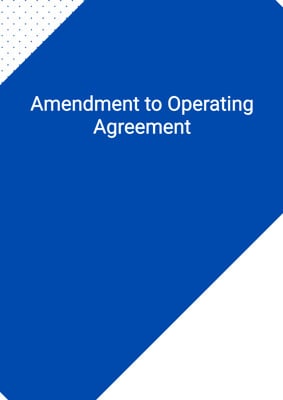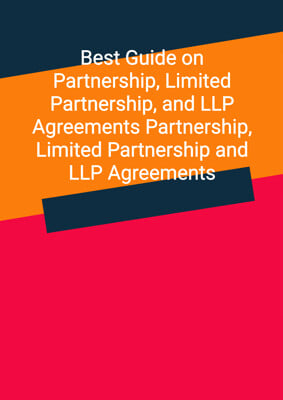How to Tailor the Document for Your Need?
01
Create Document
Fill in the details of the parties. You can click the "Fill with Member’s Information" button to complete it with information saved to your account.
02
Fill Information
Please fill in any additional information by following the step-by-step guide on the left hand side of the preview document and click the "Next" button.
03
Get Document
When you are done, click the "Get Document" button and you can download the document in Word or PDF format.
04
Review Document
Please get all parties to review the document carefully and make any final modifications to ensure that the details are correct before signing the document.
Document Preview
Document Description
The Partnership Agreement is a legally binding document that establishes a partnership between four parties (Party 1, Party 2, Party 3, and Party 4) for the purpose of conducting a business. The agreement regulates the relationship between the partners and outlines the management of the partnership. It contains various definitions and interpretations of terms used throughout the document.
The agreement begins with an interpretation section, which defines key terms used in the document. It clarifies the meaning of terms such as accounting period, affiliate, accounts, auditors, budget, business day, business plan, director, effective date, executive manager, partners, partnership board, partnership interest, partnership, percentage share, and capital account.
The agreement then covers important aspects of the partnership, such as the commencement, business of the partnership, partnership capital, further finance, profits and losses, directors and partnership board, executive management, partnership property, undertakings by partners, expenses, accounts, budgets and information, claims by partner, default, assignments, confidentiality and announcements, termination and deadlock, waivers and amendments, entire agreement, notices, settlement of disputes, governing law, counterparts, and no rights for third parties.
The agreement includes provisions for the termination of the partnership in case of a fundamental deadlock or if the financial results of the business are substantially lower than expected. It also addresses the transfer of partnership interests, confidentiality obligations, and the resolution of disputes.
Overall, the Partnership Agreement is a comprehensive legal document that establishes the rights, obligations, and responsibilities of the partners in the partnership. It provides a framework for the management and operation of the partnership and ensures that the interests of all parties are protected.
How to use this document?
1. Establish the partnership: Enter the names and addresses of the four parties (Party 1, Party 2, Party 3, and Party 4) in the agreement. This will identify the parties involved in the partnership.
2. Define the business: Clearly describe the nature of the business to be conducted by the partnership. This will ensure that all parties are aware of the purpose and scope of the partnership.
3. Determine capital contributions: Specify the initial capital contributions to be made by each partner. This will establish the financial resources of the partnership and the percentage shares of each partner.
4. Agree on further finance: Determine the funding requirements of the partnership and the obligations of each partner to contribute their percentage share. This will ensure that the partnership has sufficient funds to operate and grow.
5. Allocate profits and losses: Determine how profits and losses will be allocated among the partners. This will define each partner's share of the partnership's financial results.
6. Establish the partnership board: Appoint non-executive directors to the partnership board, representing each partner. This will ensure that the partnership is governed and managed effectively.
7. Delegate executive management: Delegate the day-to-day management of the business to the chief executive, who will be assisted by other executive managers. This will ensure the efficient operation of the partnership.
8. Manage partnership property: Clarify that the partnership property is owned by the partners in proportion to their percentage shares. This will establish the rights and responsibilities of each partner regarding the partnership's assets.
9. Undertake obligations as partners: Commit to promoting the best interests of the partnership, consulting on important matters, and acting in good faith towards each other. This will foster a cooperative and productive partnership.
10. Handle expenses: Establish procedures for reimbursing partners for costs and expenses incurred in the performance of their partnership obligations. This will ensure fair and transparent expense management.
11. Maintain accurate accounts: Maintain proper accounting records for the partnership and prepare audited accounts for each accounting period. This will provide transparency and accountability in the financial management of the partnership.
12. Prepare budgets and provide information: Develop a business plan and budget for each accounting period and provide regular management accounts and reports. This will enable effective planning and monitoring of the partnership's performance.
13. Resolve disputes amicably: Make efforts to resolve any disputes or disagreements between the partners amicably. If a dispute arises, refer it to the respective chairpersons/chief executives for resolution. This will promote a harmonious and productive partnership.
14. Comply with legal requirements: Ensure compliance with applicable laws, regulations, and stock exchange rules. This will protect the partnership from legal risks and liabilities.
15. Keep confidentiality: Maintain the confidentiality of commercial and technical information related to the partnership and the partners' businesses. This will protect sensitive information and prevent unauthorized disclosure.
16. Terminate the partnership if necessary: Establish procedures for terminating the partnership in case of a fundamental deadlock or if the business becomes unviable. This will provide a mechanism for ending the partnership in a fair and orderly manner.
17. Seek legal advice if needed: If any legal issues or disputes arise, consult with legal professionals to ensure compliance with the law and protect the interests of the partnership and its partners.
Note: This guidance provides a general overview of the Partnership Agreement. It is important to review the specific terms and conditions of the agreement and seek legal advice to ensure compliance with applicable laws and regulations.
Not the right document?
Don’t worry, we have thousands of documents for you to choose from:






















































